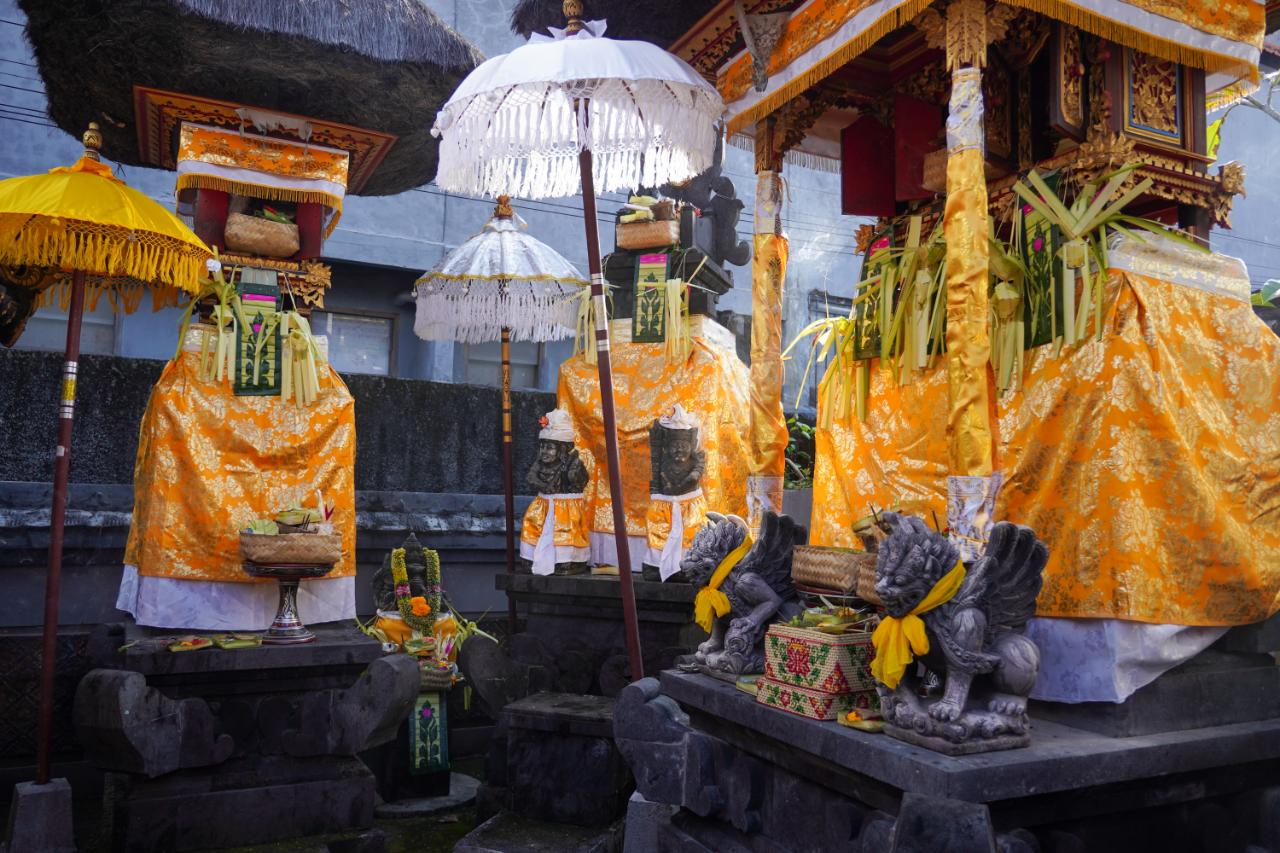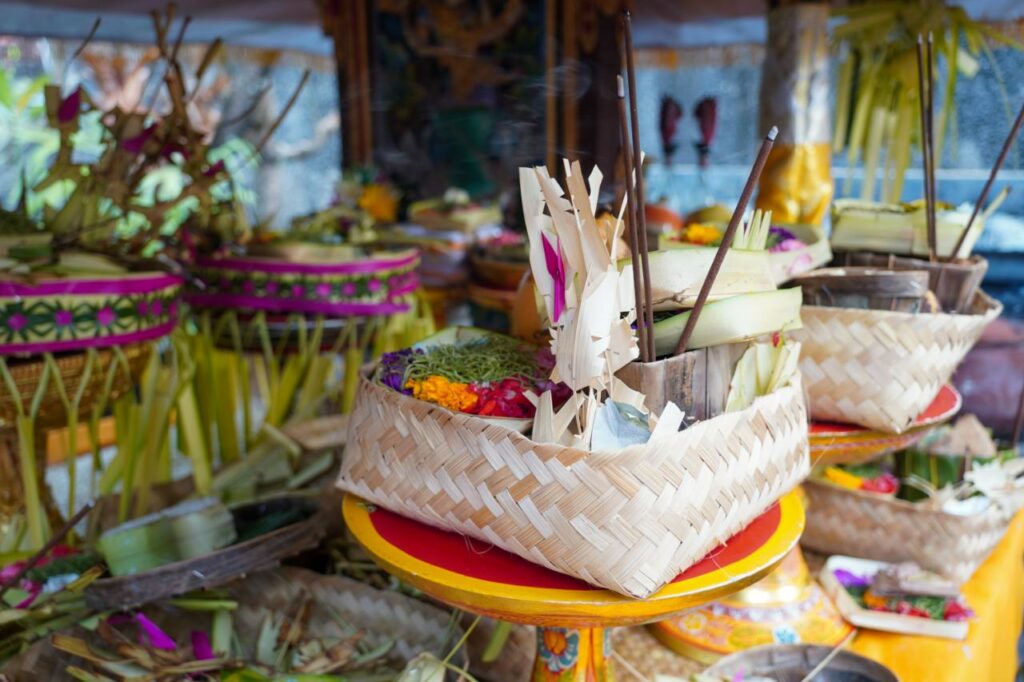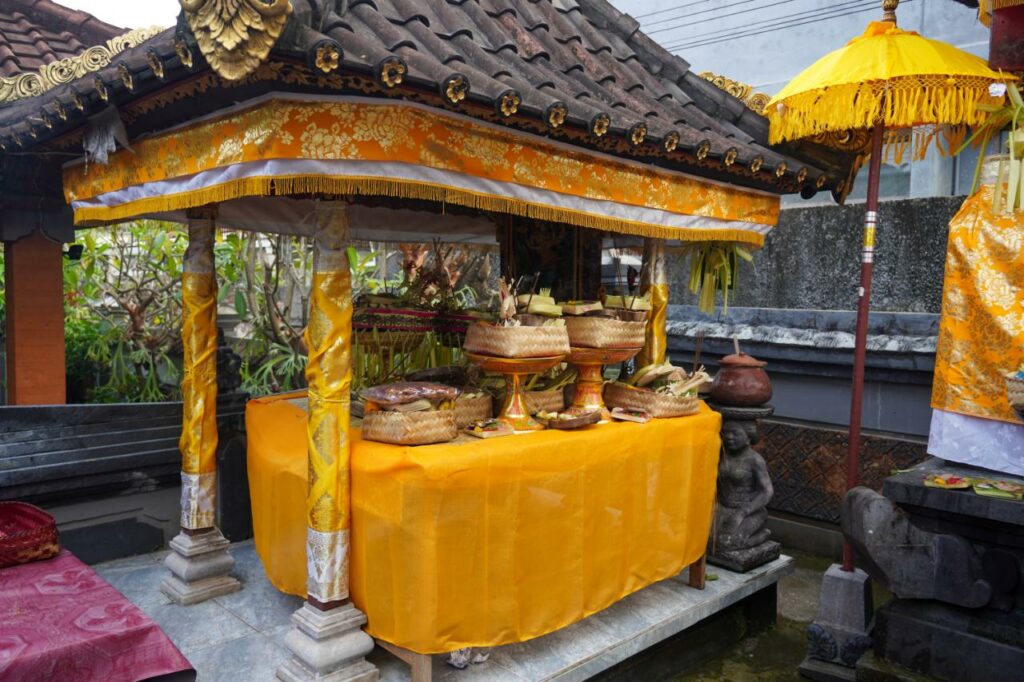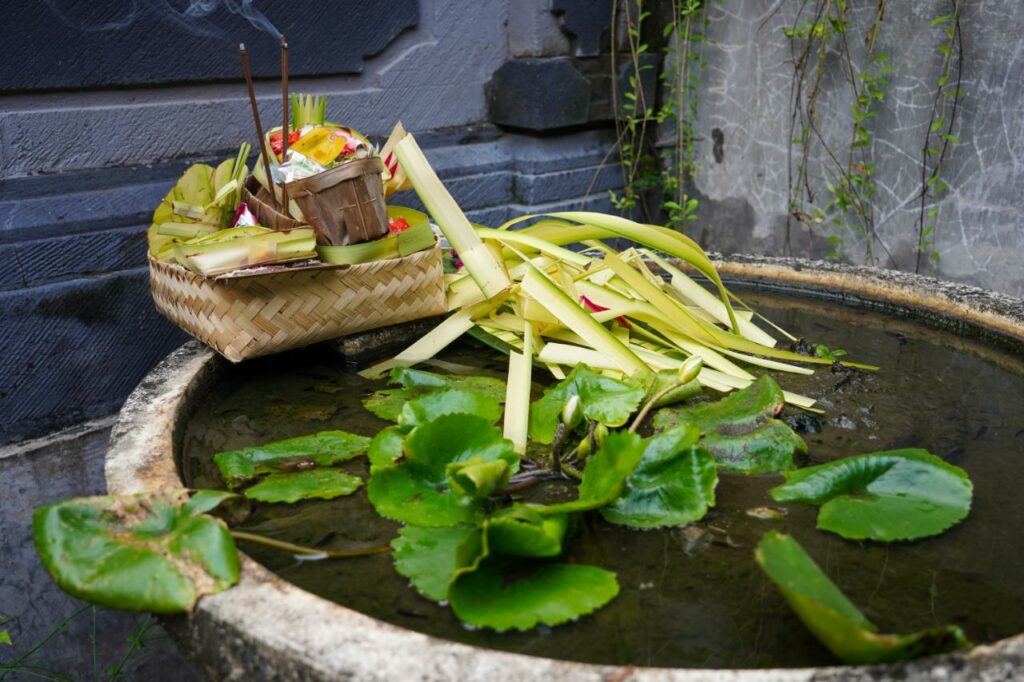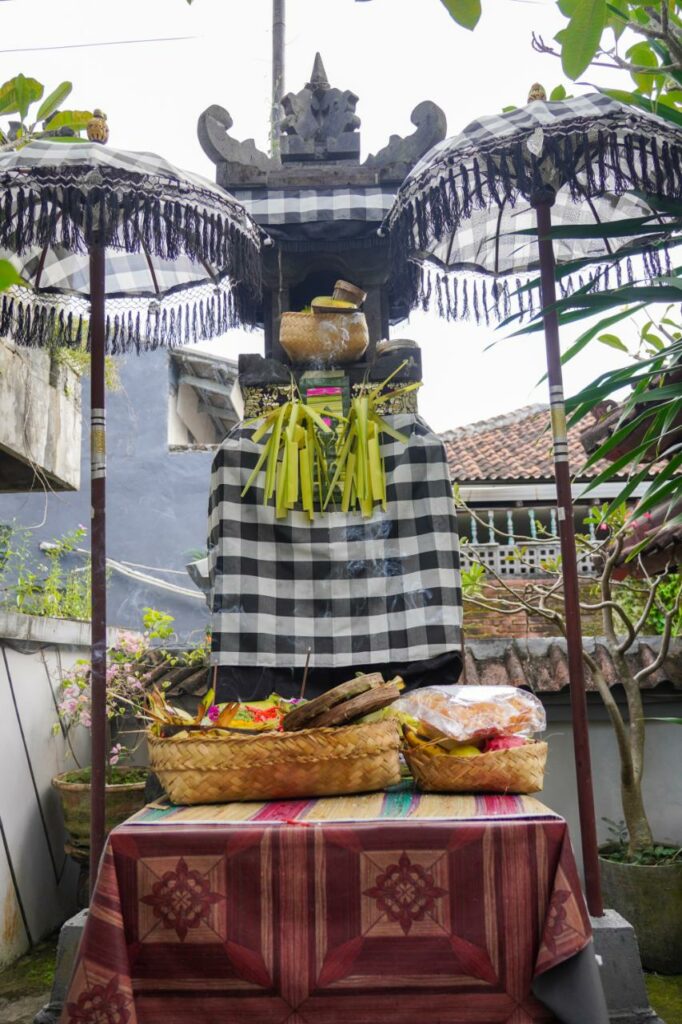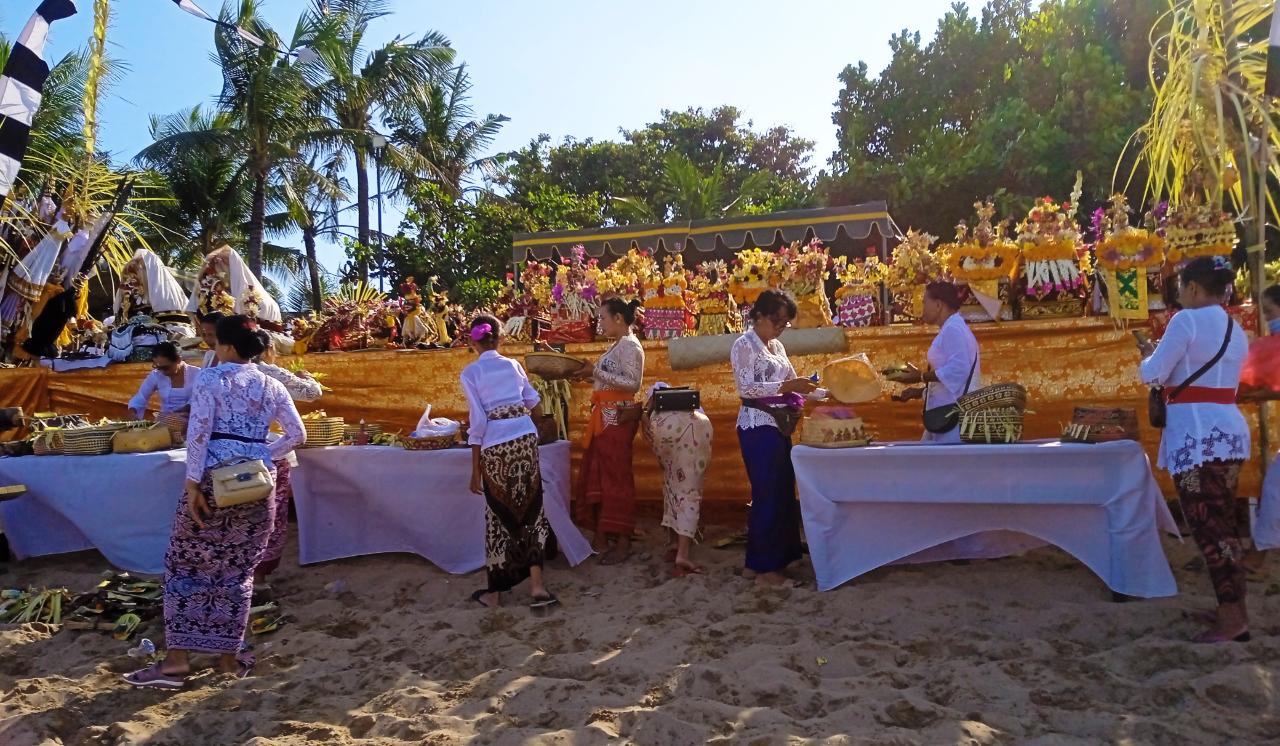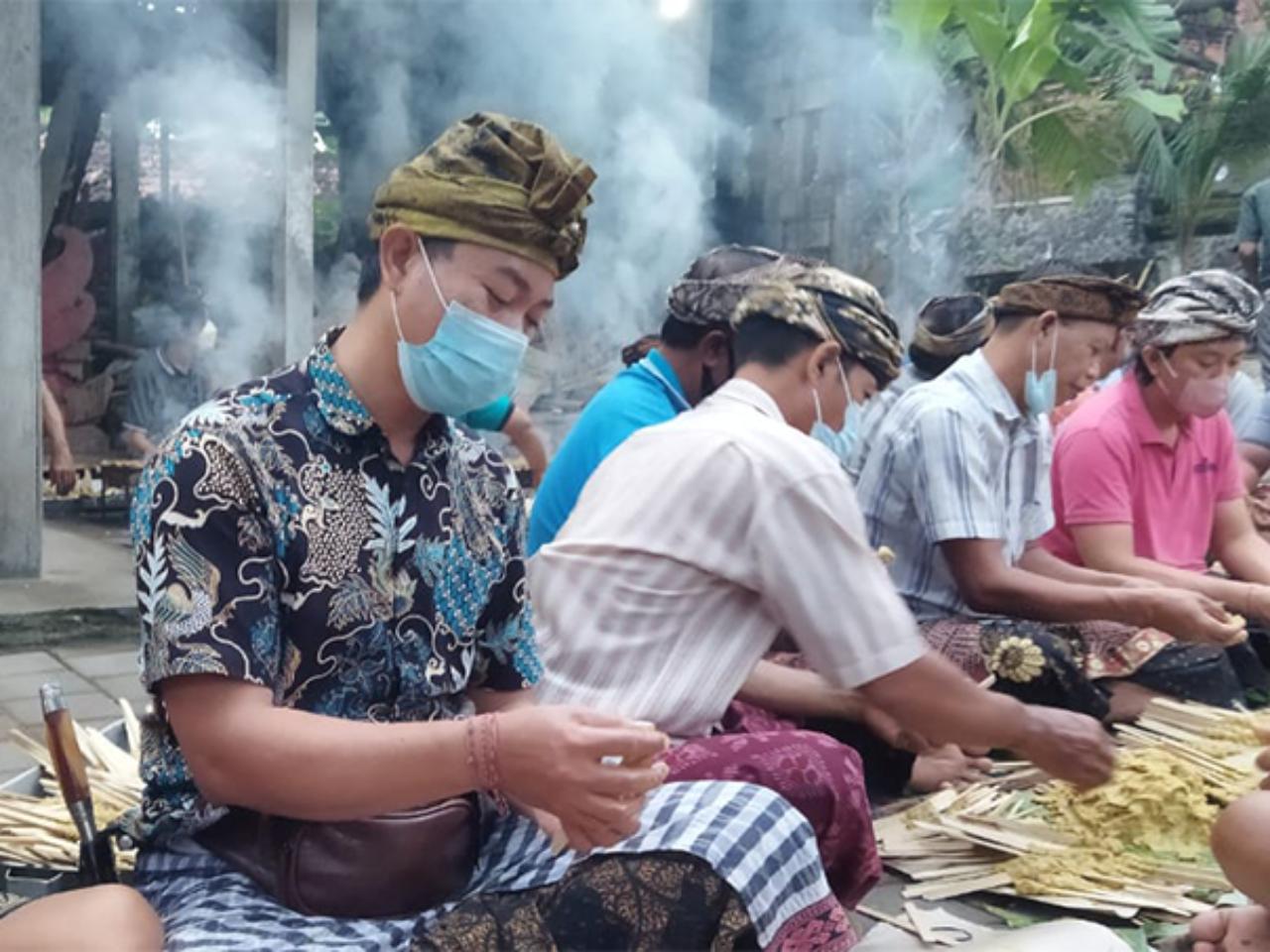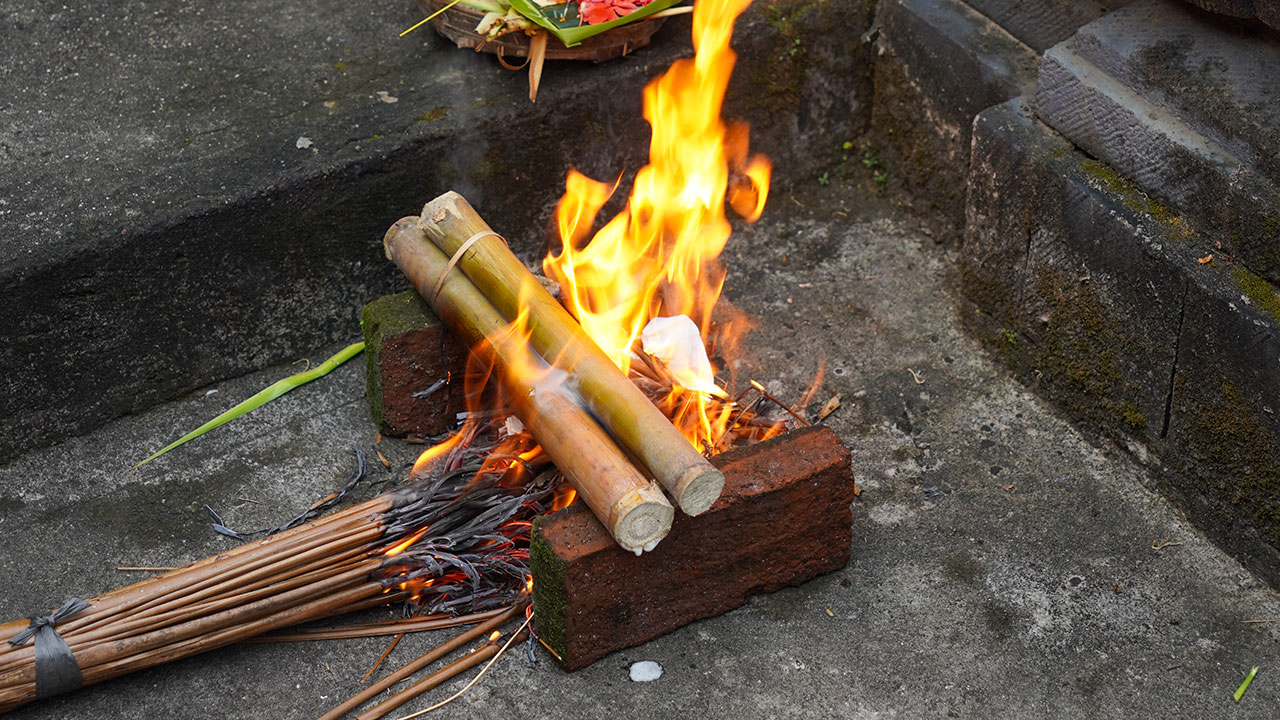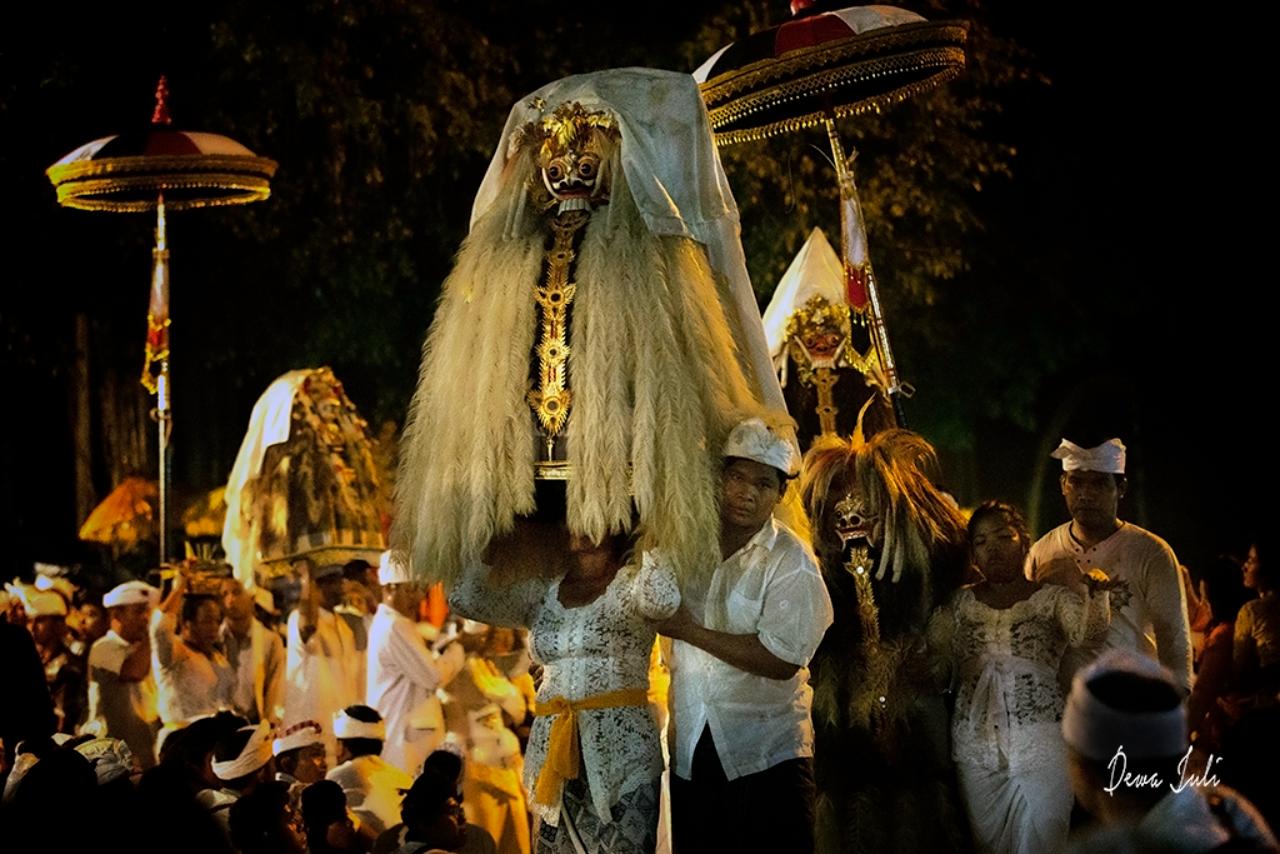Worship and Devotion
There is a saying that Bali is the island of a thousand temples, though in fact, the island has more than 10,000 temples, according to Encyclopedia Britannica. Every village in Bali has a temple village. When there is a market in the village, the market will have its own temple; we can find a temple in the rice-field, a temple for the mountain and a temple for the sea, and so on. Every traditional Balinese home has a family temple as well. These temples reflect their importance in the spiritual lives of Balinese. They are places for communication with spirits through offerings and prayers.
There are four important shrines in each Balinese family are; sanggah Kemulan, sanggah Taksu, sanggah Penglurah, and sanggah Penunggun Karang.
Sanggah Kemulan is the core of the family shrine. Kemulan comes from the word mulan which means “the core”. As the name suggests, sanggah Kemulan is a place of worship for the origin of life: Ida Sanghyang Widhi Wasa as holder of the Tri Sakti or three magic – Brahma, Vishnu and Shiva. Apart from that, the sanggah Kemulan is also a place for ancestral holy spirits who are considered to have been united with their maker and are always worshipped by their descendants for protection, guidance and gratitude. Sanggah Kemulan is placed facing the sunrise as the basis of kawitan or the origin of life – the sun is the source or start of life. This sanggah has a roof and three spaces under the roof.
Sanggah Taksu is also a roofed shrine but with a single compartment or space under the roof. As the name indicates, this is a place for the taksu (charisma or magical power), where the family pray for the grace of gods, for success in all kinds of professions, talents, business, and other endeavors valued by the family.
Sanggah Penglurah is the guardian of the family shrine as it repels negative reinforcements in the family shrine area. Being the guardian of the gods, it also conveys the worship of the family to the gods, and sends the gifts of the gods to the family.
Sanggah Penunggun Karang is where the Bhatara Kala, the god of evil spirits, resides to protect the entire home. Protecting the house and everything in it, including the family members, is a huge task for the family in Bali. Balinese believe in the seen and the unseen world therefore walls and fences alone are insufficient when the disturbances come in from the mystical realm. In Bali, mysticism is real and because it cannot be seen with the naked eye, it becomes difficult to deal with. Some people may have the ability to penetrate into mystical realms but may not be able to stay alert all day and night to defend the family from mystical infiltration and attacks. The belief in Bali is that when using the god of evil spirits (Bhatara Kala) as the guardian, logically there will be no evil spirits who dare to disturb the home and the family. Due to the function as security (pecalang), this temple is placed near entrance of the house.
The family temple could be small or large, but it is normally well maintained and has daily offerings on it. Worshipping the ancestors is very important to the Balinese as their spirits protect the family from evil forces, help to secure prosperity, happiness and peace. It is also believed that these spirits may cause trouble when they are disrespected and neglected. Therefore, maintaining a good relationship with ancestor spirits, regular offerings and prayer, and having the shrine well-kept are the family’s day to day devotion.
<< If you liked this article, you may also like our other articles >>
To chat with our marketing partner about your business, please contact The Travellist
